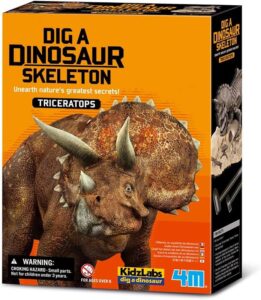What Dinosaur Starts With Z
Venturing into the ancient past is akin to opening a treasure chest, and among the rarest jewels are the dinosaurs whose names begin with 'Z'. These creatures, from the formidable Zhuchengtyrannus to the enigmatic Zalmoxes, span a wide range of sizes, shapes, and ecological niches.
Each name on the list hints at a story steeped in millions of years of evolutionary history, waiting to be uncovered. However, to fully appreciate the diversity and significance of these prehistoric beings, one must first understand what sets them apart in the vast panorama of dinosaur history.
This exploration invites a closer look at their unique characteristics and the environments they thrived in, revealing why these 'Z' dinosaurs are not just alphabetical outliers, but key pieces in the puzzle of Earth's ancient life.
Key Takeaways
- Dinosaurs starting with "Z" include Zhuchengtyrannus, Zuniceratops, Zephyrosaurus, and Zigongosaurus.
- Zuniceratops and Zhuchengtyrannus offer insights into ceratopsian and tyrannosaurid evolution.
- Zephyrosaurus and Zalmoxes reveal adaptations for survival in diverse habitats.
- Studying these dinosaurs helps understand prehistoric ecosystems and evolutionary strategies.
The Mighty Zhuchengtyrannus
Among the fascinating giants of the Cretaceous period, Zhuchengtyrannus stands out for its formidable size and predatory might, representing a significant discovery in the study of theropod dinosaurs. Unearthed in the Zhucheng area of China, this creature's remains suggest it was one of the largest tyrannosaurids, rivaled only by its more famous relative, Tyrannosaurus rex.
With a skull measuring over 1 meter in length, Zhuchengtyrannus possessed powerful jaws equipped with sharp, serrated teeth capable of delivering lethal bites to its prey. Its discovery has provided vital insights into the diversity and evolutionary history of tyrannosaurids in Asia.
Researchers emphasize its significance in understanding the ecosystem dynamics and apex predator roles during the Late Cretaceous period, shedding light on the complex interplay of these prehistoric giants.
Zuniceratops: The Horned Dinosaur
Zuniceratops, identified through fossils found in the mid-1990s in North America, represents a pivotal discovery in understanding ceratopsian evolution.
It exhibits unique physical features, including the earliest evidence of true horns above its eyes, distinguishing it from its later, more massive relatives.
These characteristics not only highlight its significance in the ceratopsian lineage but also offer insights into the evolutionary adaptations of herbivorous dinosaurs during the Cretaceous period.
Discovery Details
Discovered in 1996 by paleontologist Douglas Wolfe in New Mexico, the horned dinosaur Zuniceratops represents an early example of ceratopsian evolution. This discovery was pivotal, shedding light on the complexity and diversity of dinosaur species in the Cretaceous period.
Zuniceratops, deriving its name from the Zuni people and the Greek word for 'face,' highlights the intricate relationship between ancient cultures and paleontological findings. Wolfe's discovery included well-preserved skulls and bones, offering invaluable insights into the ceratopsian lineage.
The meticulous excavation and analysis of these fossils revealed Zuniceratops as a transitional species, bridging the gap between earlier dinosaurs and the more derived, larger ceratopsians that followed. This finding underscored the importance of detailed fieldwork and the continuous reevaluation of dinosaur phylogeny.
Unique Physical Features
What sets Zuniceratops apart in the realm of horned dinosaurs are its distinctive physical attributes. Notably, its relatively small size and the presence of two long brow horns make it stand out. These brow horns, projecting above its eyes, are thought to have been used for display or defense mechanisms. Unlike its later relatives, Zuniceratops lacks the well-developed nasal horn that typifies many ceratopsians. Its frill, the bony shield extending from the back of its skull, was relatively short but bore a unique pattern of fenestration.
- Relatively small size for a ceratopsian
- Two prominent brow horns
- Absence of a significant nasal horn
- Uniquely patterned, fenestrated frill
These features indicate a complex evolution in the ceratopsian lineage, highlighting Zuniceratops' role as a transitional species in dinosaur evolution.
Discovering Zigongosaurus
Researchers identified Zigongosaurus in the rich fossil beds of China's Sichuan Province, marking a significant addition to the understanding of Jurassic-era sauropods. This discovery provided crucial insights into the diversity and distribution of sauropods during the Jurassic period.
The analysis of Zigongosaurus fossils, including vertebrae and limb elements, revealed a creature of considerable size, fitting the general sauropod profile with a long neck and tail, and a massive body. These physical traits suggest Zigongosaurus played a specific role in its ecosystem, likely as a herbivore consuming vast amounts of vegetation.
The discovery also underscores the importance of the Sichuan Province as a paleontological site, offering a window into the complex ecosystems of the Jurassic era and expanding the global map of dinosaur evolution.
Zalmoxes: The Herbivore Mystery
Zalmoxes, a Late Cretaceous herbivore, presents a unique subject for paleontological study due to its distinct size and habitat preferences.
Insight into its diet, derived from fossilized remains, offers a window into the ecosystem dynamics of its era.
Recent discoveries and ongoing research continue to unravel the mysteries surrounding this enigmatic dinosaur, highlighting its role within prehistoric biodiversity.
Zalmoxes Size and Habitat
During the Late Cretaceous period, the Zalmoxes, a medium-sized herbivorous dinosaur, inhabited the floodplain habitats of what's now Europe, showcasing a distinct adaptation to its lush environment. This dinosaur, which stood out due to its unique physical and ecological characteristics, thrived in what were complex, dynamic ecosystems.
Key aspects of its size and habitat include:
- Size: Zalmoxes reached lengths of up to 4-6 meters, a modest size that suggests a specific niche within its ecosystem.
- Adaptation: Its body structure was well-suited for browsing vegetation at lower levels.
- Habitat Preference: Preferred floodplain areas, indicative of a semi-aquatic lifestyle or dependence on water sources.
- Geographic Distribution: Fossils predominantly found in areas that are part of modern-day Romania and Hungary, pointing towards a restricted geographical range within Europe.
This dinosaur's existence offers fascinating insights into the complexity of Cretaceous ecosystems.
Diet Insights
Delving into the dietary habits of Zalmoxes reveals a complex picture of a herbivore that navigated its lush Cretaceous environment with surprising dietary selectivity.
Analysis of fossilized remains, including jaw structure and tooth morphology, suggests Zalmoxes specialized in feeding on a variety of plants. This dinosaur likely had a preference for certain types of vegetation, possibly favoring soft, succulent plants over tougher, fibrous materials. Its beak-like mouth and self-sharpening teeth indicate an evolutionary adaptation for a highly specialized diet, optimizing nutrient extraction from available flora.
The examination of coprolites attributed to Zalmoxes supports this hypothesis, revealing a predominance of specific plant matter that further underscores its selective feeding behavior. This dietary specialization highlights Zalmoxes' adaptability within its ecosystem, thriving through a tailored approach to foraging.
Discovery and Research
The discovery of Zalmoxes, a dinosaur that roamed the Earth during the Late Cretaceous period, has intrigued scientists for decades, offering a window into the complex ecosystems of the time. Research into Zalmoxes has uncovered several fascinating aspects of its biology and environment:
- Fossil records indicate a small, robust body adapted for herbivory.
- Dental analysis suggests a diet consisting of tough, fibrous plants.
- Isotopic data from bones reveal insights into the paleoenvironment and its climate.
- Comparative anatomy studies show evolutionary adaptations for defense against predators.
These findings contribute to a deeper understanding of Zalmoxes' niche within its ecosystem, illustrating the dynamic interplay between flora, fauna, and the ever-changing Earth they inhabited.
The Unique Zephyrosaurus
Although lesser-known, Zephyrosaurus stands out for its distinctive anatomical features that contribute to our understanding of early ornithischian dinosaurs. This small, bipedal herbivore, which lived during the Early Cretaceous period, exhibits a unique combination of traits that distinguish it from its contemporaries.
Its slender limbs suggest a capability for swift movement, likely aiding in foraging and evasion of predators. The structure of its jaw and teeth points to a diet primarily composed of ferns and other low-lying vegetation, indicative of its ecological niche. Additionally, Zephyrosaurus's skeletal morphology provides insights into the evolutionary pathways that led to the diversification of ornithischian dinosaurs.
Its study illuminates the adaptive strategies these ancient creatures employed to survive in their ever-changing environments.
Exploring the Zupaysaurus Era
Turning our focus to another remarkable dinosaur, Zupaysaurus offers an intriguing glimpse into the Triassic period, revealing complex predator-prey dynamics and environmental adaptations of its time. This era, roughly 250 to 200 million years ago, was a pivotal moment in Earth's history, witnessing the diversification of dinosaur species.
Zupaysaurus navigated an ecosystem that was:
- Rich in biodiversity, hosting a variety of both carnivorous and herbivorous creatures.
- Characterized by fluctuating climates, which influenced the evolutionary paths of many species.
- Defined by emerging terrestrial ecosystems, allowing for novel niches and adaptive strategies.
- Subject to significant geological events, shaping the distribution and diversity of habitats.
This context underscores the significance of Zupaysaurus as a subject of study, offering insights into the evolutionary strategies that enabled dinosaurs to dominate the Mesozoic era.
Conclusion
In conclusion, from the fierce Zhuchengtyrannus to the horned Zuniceratops, and from the enigmatic Zigongosaurus to the herbivorous Zalmoxes, each dinosaur beginning with 'Z' reveals a unique aspect of prehistoric life.
The Zephyrosaurus highlights adaptation strategies, while the Zupaysaurus era offers insights into predator-prey dynamics.
These discoveries not only enrich our understanding of dinosaur diversity but also underscore the complexity of evolutionary processes, illustrating the intricate interplay between species and their environments.




